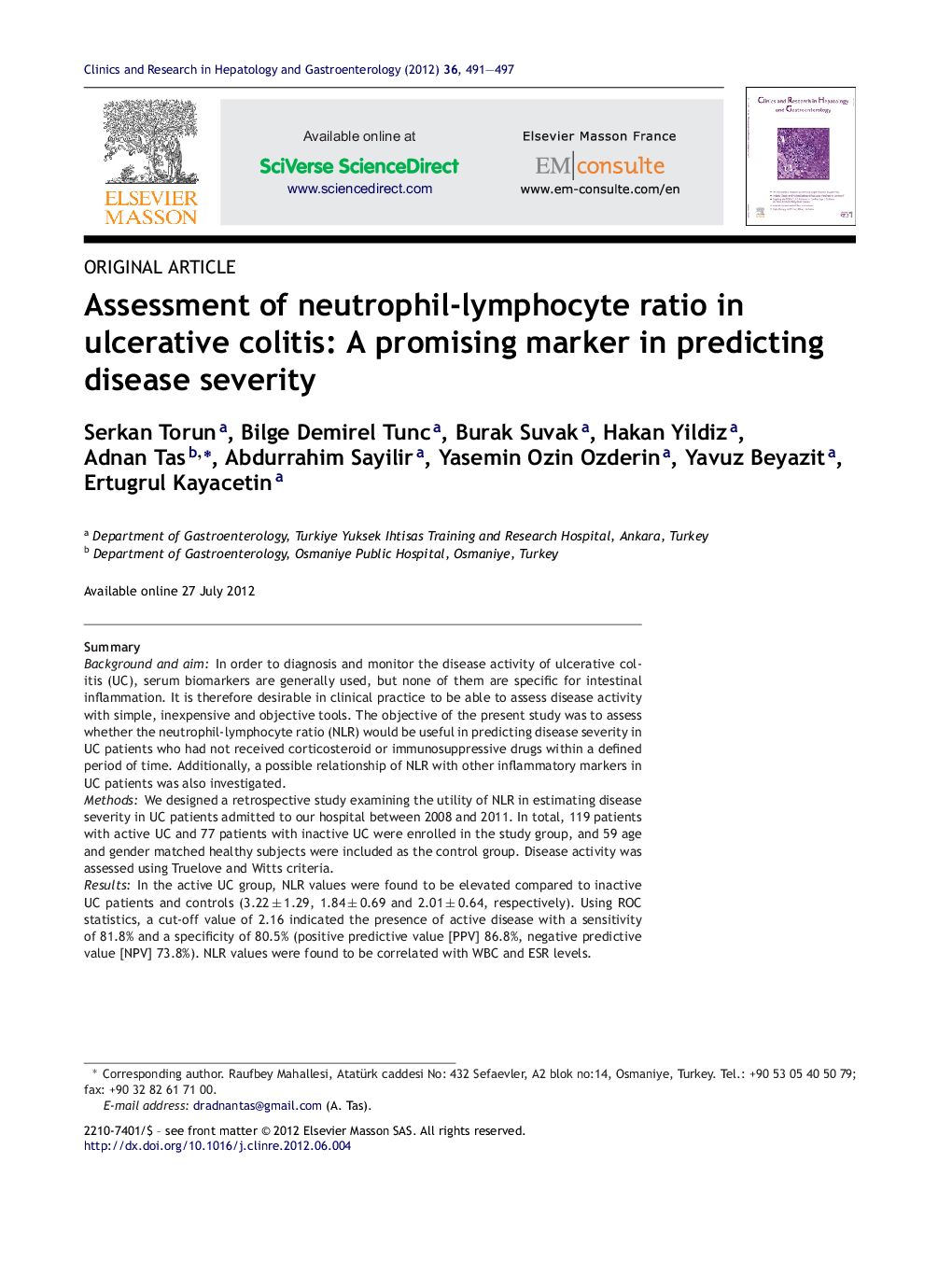| Article ID | Journal | Published Year | Pages | File Type |
|---|---|---|---|---|
| 3286677 | Clinics and Research in Hepatology and Gastroenterology | 2012 | 7 Pages |
SummaryBackground and aimIn order to diagnosis and monitor the disease activity of ulcerative colitis (UC), serum biomarkers are generally used, but none of them are specific for intestinal inflammation. It is therefore desirable in clinical practice to be able to assess disease activity with simple, inexpensive and objective tools. The objective of the present study was to assess whether the neutrophil-lymphocyte ratio (NLR) would be useful in predicting disease severity in UC patients who had not received corticosteroid or immunosuppressive drugs within a defined period of time. Additionally, a possible relationship of NLR with other inflammatory markers in UC patients was also investigated.MethodsWe designed a retrospective study examining the utility of NLR in estimating disease severity in UC patients admitted to our hospital between 2008 and 2011. In total, 119 patients with active UC and 77 patients with inactive UC were enrolled in the study group, and 59 age and gender matched healthy subjects were included as the control group. Disease activity was assessed using Truelove and Witts criteria.ResultsIn the active UC group, NLR values were found to be elevated compared to inactive UC patients and controls (3.22 ± 1.29, 1.84 ± 0.69 and 2.01 ± 0.64, respectively). Using ROC statistics, a cut-off value of 2.16 indicated the presence of active disease with a sensitivity of 81.8% and a specificity of 80.5% (positive predictive value [PPV] 86.8%, negative predictive value [NPV] 73.8%). NLR values were found to be correlated with WBC and ESR levels.ConclusionsThe present study revealed that NLR is increased in active UC. Peripheral blood NLR can reflect disease activity and can be used as an additional marker for estimating intestinal inflammation.
